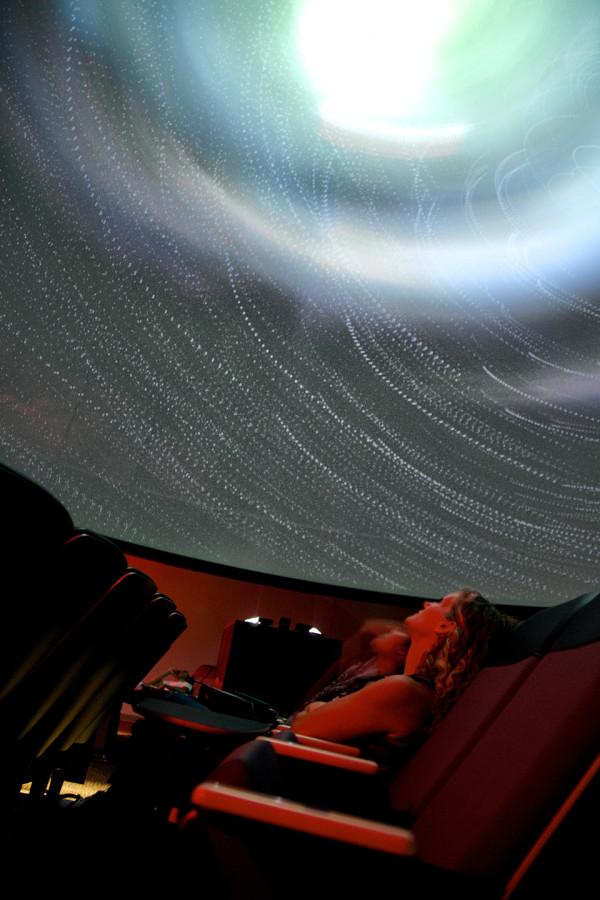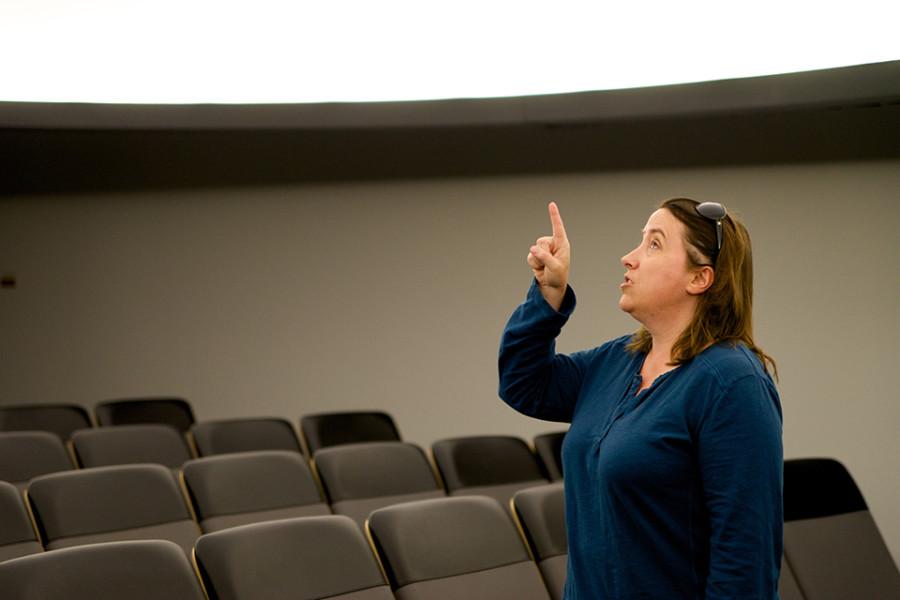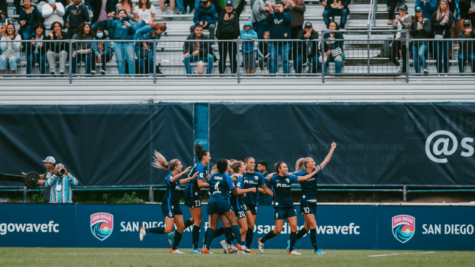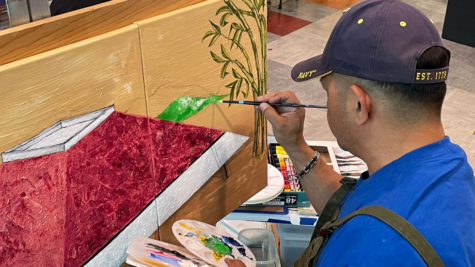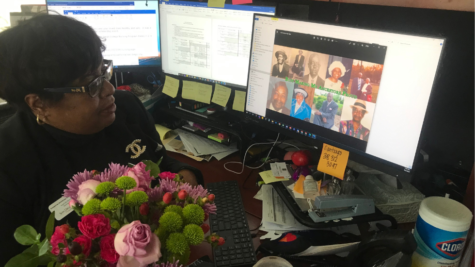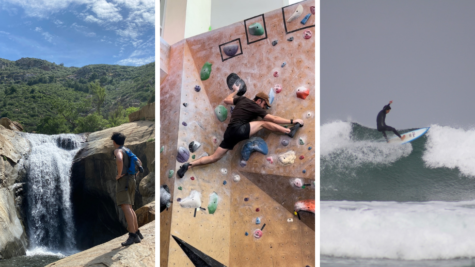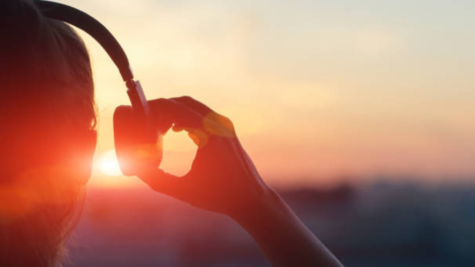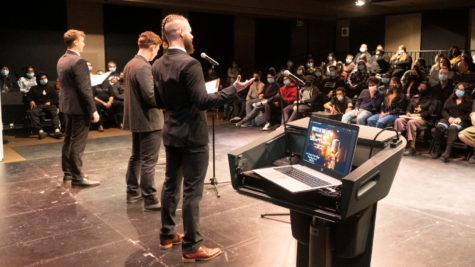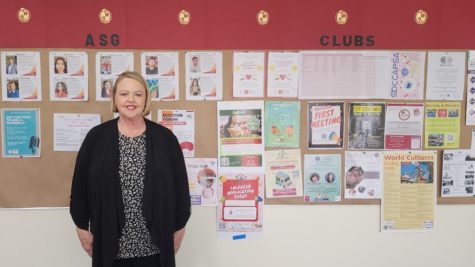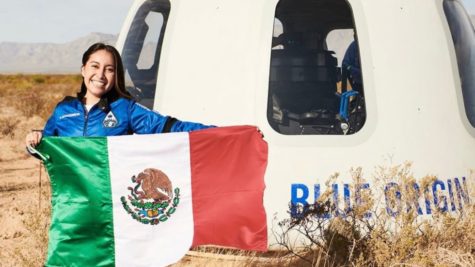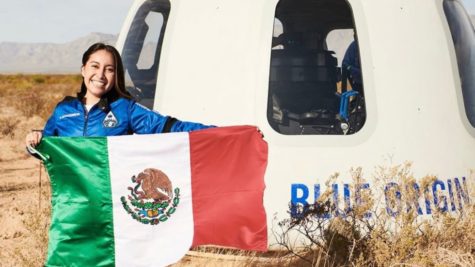The Science Behind Launching a New Building
May 14, 2014
It’s the end of the fall 2013 semester, and astronomy Professor Lisa Will is preparing for the Science Department to move into its new facilities.
“The movers are here!” head lab technician Ed Sebring announces as Will discusses the building’s progress during an interview.
There is excitement in Will’s office as chemistry Professor Nancy Crispen helps problem-solve how to comfortably fit an oversize library cart into the office she and Will share.
“You picked the right semester for sabbatical, man. That’s all I’m sayin’,” Crispen tells Will.
That was last November, when the department was in the midst of vacating its old space in the now-gutted M Building.
“This semester is all about getting it ready for students,” Will said at the time.
Fast forward to 2014, and the new Science building is in its infancy. It’s a gray cement complex without adornment seated at the corner of 16th and B streets. Inside, there are polished cement floors and floor-to-ceiling windows that let in copious amounts of sunlight. There are laboratories and classrooms on each of the four floors. The dean of science’s office is located on the first floor, the new planetarium is located on the second floor and a spacious observatory deck outside the fourth floor that is half the length of the other three floors. There is a storage area next to the deck that solved the issue of the top of the planetarium being visible outside and exposed to the elements.
The building was designed specifically with the students in mind, and the science staff is student centered. During construction, it was their determination that if anything had to be cut from the 46-page Excel spreadsheet of inventory for the new building, the science faculty was happy to cut out furniture, rather than take away from class and lab supplies.
The observatory deck is where students can use GoTo telescopes that have all the bells and whistles necessary to see a nighttime sky.
Astronomy 109, taught by Gerry Scappatici, teaches students how to use Celestron telescopes in dark spots in the city. In astronomical terms, a dark spot is a patch of sky with the least amount or lack of light pollution. “All of our telescopes can take long exposures, because they all have tracking motors,” and they all have viewfinders, Lisa Will said via email. There are also lightning rods on top of the Science building to protect the weather stations. Weather is important when looking into the sky and to visibility of celestial data.
The star of the new building is the planetarium which seats up to 80 people and has piqued the curiosity of many, according to Will.
“A planetarium simulates the sky in an indoor setting. A planetarium is particularly useful in a metropolitan area like San Diego where so much of the night sky is lost to light pollution. It also enables us to demonstrate motions on the sky and other astronomical topics in a much more realistic fashion than a traditional classroom allows us to do. It helps students visualize what would otherwise be very abstract.”, according to Lisa Will, via email.
The new planetarium in the Science Building is digital, provides more options and like anything else, requires a learning curve. Will has the ability to show the sky and galaxy in real time, as well as simulations of day and night and allows her to be in two places at once on the same planet. The moons are challenge, however, but she is trying to push the system to see all of what it can do.
It is a Scidome High Definition, and the northern and southern hemispheres are shown separately. The dome is made with NanoSeam material which is the same material the Imax Planetarium at the Reuben H. Fleet Center in Balboa Park is made with. The planetarium is equipped with two servers, one dome, one sound system, two projectors, one (planetarium) software package, and one animation program to create shows with that will allow Will to offer to the public.
The new Science building was conceived through Proposition N on Nov. 7, 2006, which proposed that facilities in the San Diego Community College District would be remodeled, repaired and added. Voters approved the $870 million bond for construction, including safety and electrical systems, roofs, classrooms, student supplies and lab equipment.
Once Prop. N passed, the next step in a series of processes was to get input from the science faculty at City College and required a central voice for the department who could communicate effectively with the architects. The central voice and liaison between the architects and the faculty was Will, professor of physics and astronomy at City College. Her previous experience with similar projects was key to her taking the role to represent the science facility. She worked with the head of the science department at Arizona State University when they went through the same experience of getting a new building.
Will’s position as liaison included minimizing the noise — anything immaterial to the project at hand. As liaison, Will communicated with the architects, state agencies, including the Division of the State Architect, district administration, faculty colleagues and City College administration. Another part of her position as liaison was to keep them focused and she kept the conversation moving.
“It was … it’s very interesting working that closely with somebody out of a different field than your own. I actually really enjoy working with the architects.” Will said. “Any faculty member in our departments who wanted to participate, could.”
Will said she encouraged full faculty participation so that all science departments had input about the new class rooms and labs. This was the first step in the process before construction could begin.
In the next phase, Will communicated the needs and wants of faculty to the architects and designers. Once designs were drawn up, they were presented to Will and faculty for their reaction and any “tweaks” that needed to be made. Once the design was approved, it went to the Department of the State Architect, which oversees construction and compliance among other things. The next phase after that entailed compiling, finalizing and filing all the construction documents, including blueprints. After all this, ground was broken to begin construction.
When the construction of the science building was complete, faculty and district administration conducted a walk through. A walk through allows people to see the physical results of what they had only been able to see in architectural and contractors’ drawings during the construction period.
The construction of the new building and new class rooms created the opportunity for science faculty to decide what new furniture and supplies would best benefit students in the different science classes.
Each discipline of science — astronomy, chemistry, biology, physics and geology — has different supply and furniture needs from each other right down to the layout of classrooms and labs.
One of the few commonalities of the classrooms and labs is that they can only seat 24 students. The upside of this is twofold: more individualized learning for students and more class section offerings. As of this writing, the science department is in the process of hiring a new full-time instructor and they have pitched requests to hire another couple of faculty members. Astronomy now has a its own laboratory. “It’s exciting to create new labs with new equipment,” Will said.
“What can I say, we love it,” Crispen said with excitement.
She has good reason to gush. Chemistry has smart classrooms with audio visual capabilities, six laboratories, one of which is for organic chemistry and a student project lab for independent lab. All the laboratories are well-equipped with fume hoods, eye wash stations, benches for students to sit at, wash stations, drying pegs for glassware and built-in cubbies for student backpacks and personal items. Each of the labs can be accessed from the second floor balcony outside which is another safety feature. There is a hallway that runs between the labs inside the building on the second floor. The hallways serves a spacious and organized storage space for all the chemistry equipment and glassware. The chemistry labs were built with an emphasis on the safest equipment for the budget.
San Diego City College science faculty teach two to four classes per instructor. Will had the time to serve as a liaison and move offices because she was on sabbatical for the fall 2013 semester, which she earned for her pitch of the new planetarium. Faculty are eligible for sabbatical every six years, per their contract with their union if they pitch a project that has been approved.
As for the rest of the faculty, they were given a window within which to begin moving starting Thanksgiving week through the week before the spring 2014 semester.
Student Forrest Long expressed delight about the new building: “I’m a little excited because older buildings usually have to be updated and it gives students the opportunity to learn in a new environment,” he said.
The science department was successful in its endeavors and it shows in enrollment numbers, which have not dropped but instead have increased, according to Will. Strong enrollment is a positive sign for the new Science building and City College.


